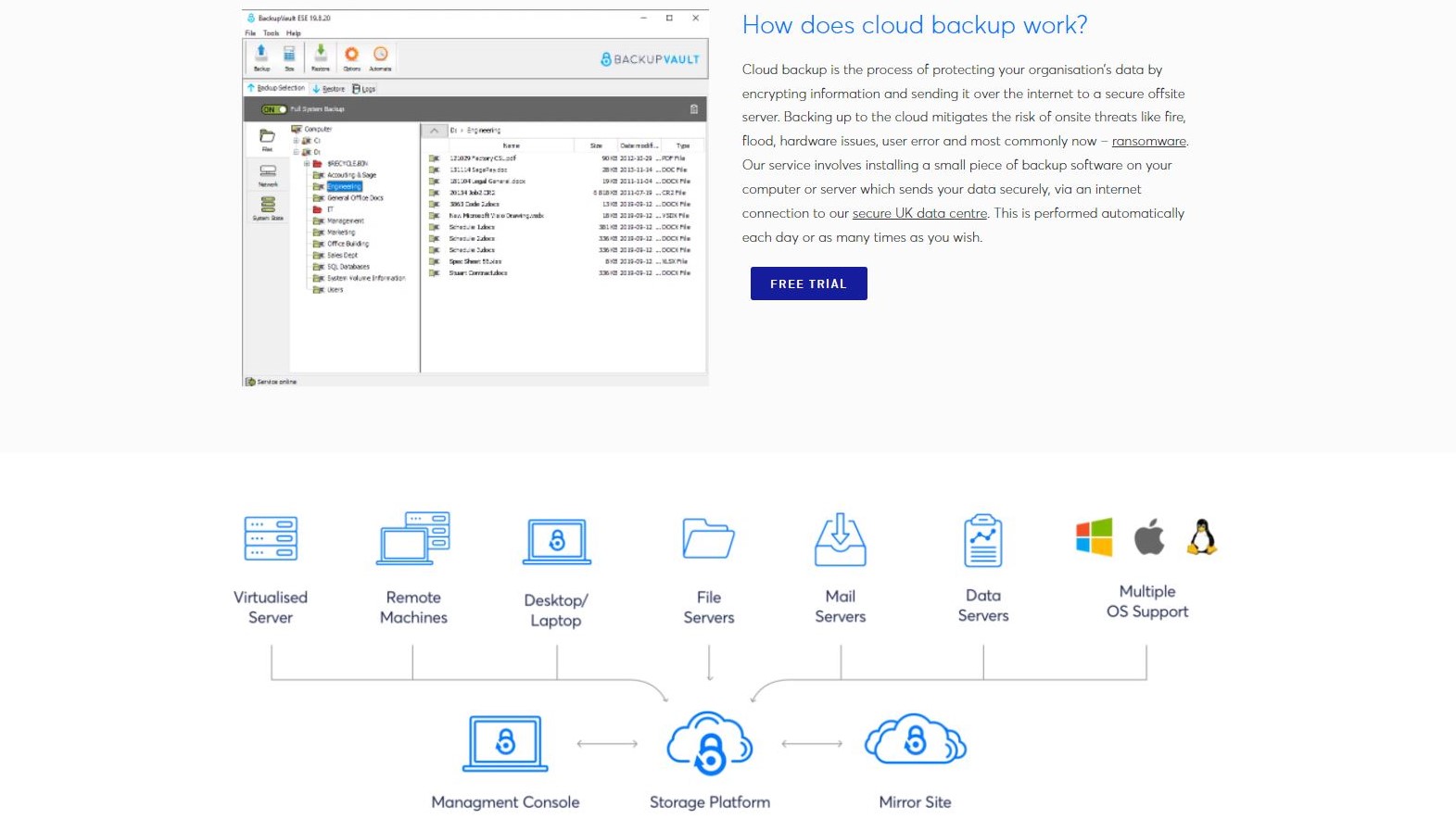
There was a time when any business could get by with cable or ADSL networking for their employees. You would call the local internet service provider and arrange a contract, then connect up every computer to the internet for bookkeeping, email, and other business tasks. While that may have worked at one time for smaller companies, the business world has changed and become much more dependent on extremely high-speed connections.
For companies that want to keep pace with this rapid change and stay highly competitive with instant access to data, adopting full fibre gigabit internet means embracing this new reality of pervasive digital transmissions. The files are getting much larger, and the high-speed connection needs of most companies have changed as well. It’s no longer possible to stay competitive with the standard cable or ADSL connection in your workplace.
Here are five reasons to consider upgrading to a faster gigabit internet connection for your business.
1. Artificial intelligence goes mainstream
One glance at the news and you will discover how AI has experienced explosive growth all across the world. ChatGPT is helping people write resumes and cover letters, AI tech is translating spoken languages in real-time during business trips, and powerful AI bots can monitor your video conferencing sessions and take notes for your team.
Yet, apart from all the buzzwords and announcements, AI has become a practical necessity for companies of all sizes. AI bots help with research and then can create a business presentation, including the handouts for a meeting. Workers are utilizing bots to summarize reams of documentation that have existed for years. As you can imagine, all of the AI processing occurs on the internet but only if you have fast enough access for every employee.

In addition, we’re still in the early stages of AI expansion in the workplace. When you conduct research using an AI bot, the last thing you want is a delay in your connection as you move from one task to the next. Workers are now routinely connecting to multiple AI bots in their browser and will eventually start performing far more complex tasks, such as asking an AI to maintain a backup on your cloud computing server or archive all video from your online meetings. Nothing will stress test a network like artificial intelligence, because it is now becoming not just pervasive and powerful but incredibly useful.
What will change in the near future? Artificial intelligence is going to invade every area of business including media production, the financial sector, advertising and marketing, and everything in between. All of this innovation with AI will require faster and more reliable connections, and it’s not even clear what the innovations will be.
What is clear is that a high-speed connection will be an important factor on whether the AI is successful and helps employees do their jobs. As one example, a video producer might start using AI to generate high-quality videos from simple prompts, such as “create a sales video that summarizes our market segment.” The resulting video file will be quite large, and the producer will want to tweak the video to match the needs of the company. These sessions with an AI will benefit from a high-speed connection in ways we haven't even envisioned yet. Workers will be the most productive when they can see the results instantly, review the video files, and then transmit them to other workers for review and approval.
2. Massive cloud computing backups
Business exists in the cloud these days, but not for every task. For many firms, the accounting system must be local and housed on an internal server, and data has to be encrypted locally before it is transmitted to the cloud. Depending on the size of your organization, you may have multiple employees doing accounting work, making backups of financial data, and working in a high-stress environment where the last thing workers need is a slow internet connection.
One cause of stress for those types of workers -- or anyone at your company who needs to complete tasks quickly without any lag on their connection -- is internet lag. It means there isn’t enough bandwidth for everyone so relying on a slower connection creates a constant battle for employees who need to make backups of their data. Importantly, this need for making backups only adds to the stress when the archives take too long to upload.
And this doesn't address the need for your IT department to conduct backups of corporate assets, documentation, emails, and other digital files. Companies have needed to perform high-speed backups to the cloud for the last couple of decades or more, but the amount of data keeps increasing year after year in terms of what needs to be archived and how often.

Fortunately, gigabit internet solves this problem because the 1 gbps connection can make some daily backups almost instantaneous, and when multiple employees need to archive data, they can trust that there won’t be the same delays they've experienced with a slower connection. It means with this added speed that the backups will be more reliable, because the faster speeds will help workers complete the backup without interruptions or delays.
There is another factor related to backups as well. Workers are more likely to check the backups and retrieve files when they know they can do that almost instantly or at very high speeds. With a slower connection, they are less likely to check the archives and retrieve files because they know it will all take longer and could lead to some reliability issues.
3. Hybrid work environments
An interesting shift took place around the pandemic where workers would relocate from the office to their home. Of course, their data needs were the same, often working on documents in the cloud, making business presentations, connecting over Microsoft Teams, and generally connecting at all times of the day at home and in the office.
What surprised some workers during this time, especially those who had already embraced gigabit internet in their residences is that they became more productive at home. One reason for this is that they had a solitary connection while the kids were at school and no one was watching 4K videos on Netflix. Suddenly, they had a digital pathway all to themselves. The incredible performance of their home network made them more productive.
Then, they went to the office. With multiple employees connected at the same time, the expectation was that they could connect at the same speeds without any lag. That wasn’t always the case, especially if a business was still using a slower cable or ADSL connection. This might even be the reason some hybrid workers have complained about how they are not as productive in the office, dealing with slow connections that cause delays.

Fortunately, a gigabit internet connection in the office can address those concerns. For companies that want employees to be productive no matter where they work, or for businesses that want to encourage workers to come to the office more, having a high-speed gigabit connection can be a game-changer in the realm of productivity.
That also helps with employee morale. The goal is for employees to be just as productive at home with their own gigabit connection (which is now incredibly common in households) as they are in the office. The shift is that workers are starting to realize that the office is where they are not as productive and experience more lag and slowdowns. Solving that issue means they won’t even think about connection issues and will focus on the tasks at hand.
4. Media production
In recent years, the idea of having a few dedicated workers who only do media production has changed. In the past, a creative team might be the only ones making high production value videos, taking photos at a business summit, or creating digital materials for an advertising campaign. These days, everyone is a media producer; in fact, every employee is now taking high-resolution videos with their phones, capturing photos at stockholder meetings, or conducting a livestream session on social media with the remote office.
All of that data requires a fast connection. In some cases, the creative assets have to be edited locally using apps like Adobe Premiere and Adobe Photoshop and then stored on the cloud, or sent to a backup server. For a livestream, it won’t work to rely on a cellular connection especially when the video quality needs to be pristine and smooth.
The reality of having everyone in your company be a media producer means that gigabit internet is needed now more than ever. Every endpoint for employees becomes a fast and reliable way to stream high-resolution videos, photos, and live streams.
This is not meant to discount the training and expertise needed to work in the creative field. Designers, video producers, audio editors, and illustrators all have amazing skills that are in high demand. What has changed is that we all have phones and we are all constantly taking videos and photos, so there’s an even greater need for a fast connection to handle all of that digital transmission from every worker, not just the true experts in their field.
5. High-fidelity videoconferencing
It’s amazing how videoconferencing has taken over the workplace, and almost in the blink of an eye. As we all know, the pandemic created a tectonic shift in how we work and where we work.
Suddenly many employees started working remotely and needed to connect with each other using apps like Zoom and Microsoft Teams. While we’re still feeling the effects of that shift and many workers still stay home because it is accepted and helps them be productive, there is also a massive trend where people are working in an office again. Even though we might not be remote, we’re still connecting by video just as often, and in recent years many companies have realized the benefits of high-definition videoconferencing. Sure, anyone can connect with a phone or a laptop in the office at normal resolution, but a high-def connection in an app like Zoom using a more powerful webcam makes you feel like you are sitting right next to someone.
To make that all happen, gigabit internet at speeds of 1 gbps ensures that a high-resolution feed from the latest and most high-definition webcams still stays smooth and reliable. Imagine having multiple 4K television streams running at the same time in an office and that’s exactly what it is like to have employees sharing a high-def video stream for meetings.
Importantly, the need for high-definition streaming for meetings will only increase. Webcam quality is improving, and more and more workers are seeing the benefits of being able to see a coworker in high-definition instead of the grainy, low-quality video from several years ago. When you can see and hear clearly on a video call, it means communication is more robust and there’s less of a need for in-person meetings. It’s also true that high-def video requires high-quality audio as well, something that sounds more like a home theater.

All of these improvements help workers stay more productive and improve communication, and they all require faster internet connections in an office setting. In the future, videoconferencing will improve to an even greater extent with 4K or even 8K video. This will create a life-like appearance in video chats with employees and high-end audio. You will be able to see, interact with, hear, and communicate to a greater degree with 4K video conferencing.
Being ready for that coming revolution is important. Years ago, high-fidelity video conferencing used to cost thousands per month, but with full-fibre gigabit internet and improved webcams, this type of video connection in business will become routine -- and much more affordable.







